Murky Waters of Guatemalan Fair Trade Brands
Murky Waters of Guatemalan Fair Trade Brands a Guide. I contacted Elena Laswick after finding her post on line and asked if she would mind Ethical Fashion Guatemala re-posting this Article about Fair Trade practices or claims of by many selling Guatemalan handmade Textiles. I have often thought about writing or attempting to write such a guide considering my thoughts on Fair Trade practices are marketing tools, not reality.
Elena Laswick is a consultant and textile enthusiast living and working in Nebaj, Guatemala. She has been living and working in the remote Ixil (“E-sheel”) region of Guatemala for the past three years. This region captivated her because of its relative seclusion, natural beauty and woven wealth. Although there is no lack of artistic ability or desire to get ahead here, after meeting with many groups of weavers it quickly became clear that what is lacking is a sustainable and fair route to an international market.
This area was one of the hardest hit during the Guatemalan Civil war in the early 1980s and remains one of the most underdeveloped regions in the most underdeveloped department – Quiché – in Guatemala. Currently, weavers desperate for cash typically rely on middle-men to get their products to markets in other parts of the country. This doesn’t earn the weaver either a fair wage or the recognition she deserves for her skill or time.
As an artisan liaison, I’m trying to build a bridge between these rural weavers and the international marketplace. Guatemalan Fair Trade Brands,
As consumers, we are constantly faced with choices. But many of us are also busy. We don’t have time to investigate where every ingredient in a face cream comes from, or which coffee farms treat their workers fairly. We can’t all be experts on how long it takes to tool leather, or even where in the world certain countries are located. So especially as conscientious consumers, who care about where our money is going and who it is benefiting, it’s important to feel we can trust the information on product labels.
We need the branding and labeling of products to help guide us through the obstacle course of choices encountered even in our simplest purchases at the grocery store. But what happens when you learn to read between the lines of some labels and find their claims don’t stand up?
Over the past three years living in rural Guatemala, I’ve gotten to know some of the people and processes behind this country’s amazing textile tradition, and have seen how some companies’ practices do not always align with their marketing claims. I’ve seen firsthand how weavers are taken advantage of when the “Guatemalan Fair Trade Brands” turns into the free market; when companies misrepresent themselves and unsuspecting consumers are led to believe their money is benefiting weavers, when really they see no profit from the sale of the company’s final products.
This issue is one of integrity and accountability, and therefore applies beyond the world of Guatemalan products. If consumers don’t hold brands and their labels accountable, then words that were created to set companies apart based on the principles and practices they champion cease to have meaning. It is a global challenge to keep terms like “Guatemalan Fair Trade Brands” and “ethical” from losing their significance. If anyone can use them as a marketing tool, even when they do not accurately represent their practices and values, then why use them at all?
Informed consumers are the best accountability mechanism there is in the face of this unfortunate development in the Guatemalan Fair Trade Brands; this article was written with consumers in mind. It will provide you with some background on the traditions and techniques most often abused in Guatemala, and includes a checklist at the end for the next time you are faced with a choice of artisan products, so that you can make a more informed decision.
So where to begin? When navigating Guatemalan Fair Trade Brands and not-so-fairly-traded products, a word you’ll often come across is “huipil.” A huipil is a blouse worn by indigenous Mayan women that is part of their traditional dress and also, in many cases, their cosmovision. Huipiles (plural of huipil) vary greatly in style and technique, with over 110 different styles of daily use huipiles in Guatemala – a country roughly the size of the state of Ohio! Most huipiles are woven on a backstrap loom – a technique exclusively practiced by women – and can take up to six months, or longer, to complete.
Photo: Elena Laswick, 2018.
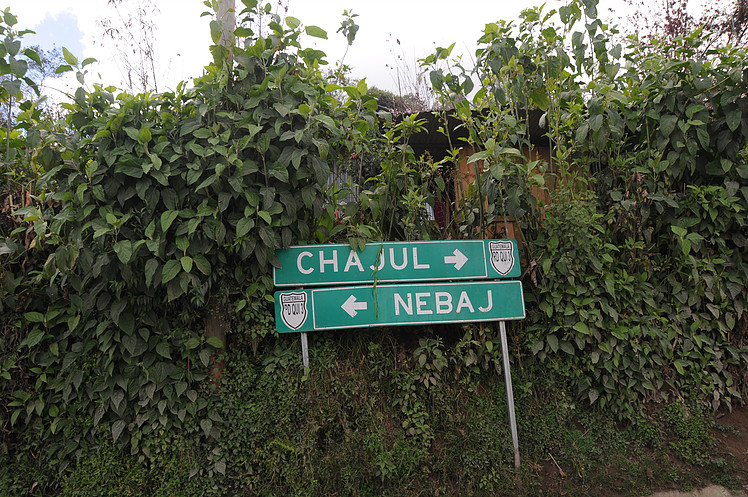
Guatemalan Fair Trade Brands
All Photos: Elena Laswick, 2018.
Before huipiles became a popular tourist commodity, women would only weave them for their personal use, and wouldn’t dream of selling them. Now, with such high demand for these woven wonders, weavers in Guatemala are often coerced into selling their huipiles, or sell them for a fraction of their worth out of dire necessity (such as to buy medicine for a sick child). These un-ethically sourced huipiles make their way to markets in Guatemala such as that of Chichicastenango, where they are sold for as little as $2 – $15 depending on the intricacy of the brocade and/or embroidery. As a point of comparison, a new huipil typically costs between $60 and $450! The raw materials alone could cost a woman up to $100, without factoring in her time investment.
The intricacy and beauty of these textiles has led to their transformation by different companies into handbags and other products intended to appeal to a broader more international market. These items are then billed as “artisan-made” and “ethically sourced,” although many times the textile element was acquired through a middle man. This issue of repurposing used or more appropriately, “embezzled,” huipiles, is not a new controversy, and illustrates that there are problems with interpreting how product labeling reflects the true benefit to weavers in Guatemala.*
Photo: Elena Laswick, 2018.
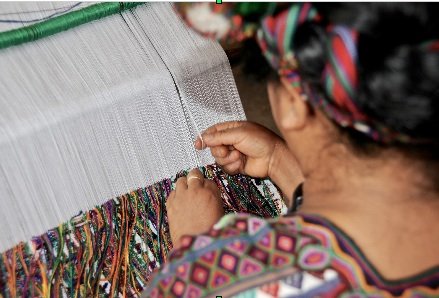
Guatemalan Fair Trade Brands
In order to know that weavers will indeed directly benefit from your purchase of a Guatemalan artisan product, it is important to be aware of the existence in this space of fair trade membership groups, such as the World Fair Trade Organization (WFTO) and the Fair Trade Federation (FTF).** In fact, the first reason the WFTO lists under “why to become a member,” is to help brands, “differentiate from pretenders.” These membership groups include feedback mechanisms like annual peer reviews, to ensure member brands are honestly representing their practices. The membership application for the FTF includes questions to ensure Federation members understand and respect the cultural identity of the products they are selling in order to qualify for membership.
However, there is no policing the language brands can or cannot use to promote themselves and their products. Brands that are not members of fair trade membership groups see “artisan made” and “fair trade” as trendy marketing buzzwords, and use the associated language regardless of their true sourcing and/or production practices.
**Read more about fair trade membership versus certification, here.
This leads to the problem of non-fair-trade brands creating (unfairly, as it were) competition for brands that are following fair trade principles. By co-opting fair trade language for their own commercial purposes, non-fair-trade practitioners are able to recycle language (and textiles) with virtually no negative repercussions. In fact, quite the opposite; these brands have some of the largest market bases. They boast up to forty thousand followers on Instagram, as well as ties to international brands like ASOS, Keds, and Free People, to mention a few.
Here’s an example of this type of co-opted language from two different websites:
Typical language of FTF member that works directly with weavers:
Our products make a difference in the the lives of indigenous women and ensure a better future for future generations and communities.
Typical language of a brand with no membership affiliation that buys textiles from a middle-man:
Your purchase supports the Maya culture and contributes to the success of local family businesses.
To the untrained eye, both of the above statements sound great and also very similar. In both cases, it sounds like your money is doing good, and going to the people who need it most. The differences between the same two types of companies become a lot clearer when comparing products and product descriptions, such as these two handbags:
- 2.
Typical language of FTF member (bag #1):
Choose from any of four colors of our “Arizona Highways” designs, handwoven in 100% AZO free cotton.
Typical language of non-member (bag #2):
Our bags are handmade from discarded fabric from Guatemalan weavers. Your purchase is not only sustainable, it’s guaranteed one-of-a-kind!
If a brand partners with artisans, rather than using “discarded fabric” (the “discarded” fabric mentioned here are the embezzled huipiles discussed above), then everything is still handmade and therefore unique, but also replicable. In addition, if a brand is working directly with weavers, they are coming up with designs (eg. Arizona Highways, in this example) typically offered in several color options. While it might sound great that something is “one of a kind” and “unique,” this just goes to show the brand isn’t partnering directly with weavers. If they were, there should be no problem getting several made!
Since there are no major negative repercussions for brands that purposefully blend transparency with opacity when advertising their supposed “Guatemalan Fair Trade Brands” practices, the consequences impact only the people at the bottom of the production chain: the weavers.
This is essentially the free market all over again: Guatemalan Fair Trade Brands that rely on unfair working conditions in order to turn a profit. Whilst the ideals promoted by these brands may lead us to believe they are creating transparent chains of production and providing opportunities for disadvantaged producers (fair trade principal #1), in reality they obscure the fact that the women who created the most eye-catching element of their products don’t see any profit from the sale. In fact, it’s likely these women have no idea how much their weaving sold for, much less how it was used.
Photo: Elena Laswick, 2018.
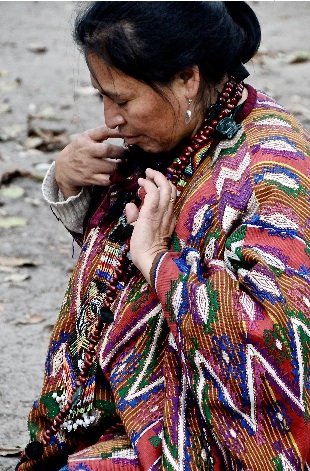
Guatemalan Fair Trade Brands
Even if a Guatemalan Fair Trade Brands mission is based on a genuine desire to help, their marketing typically represents their perceived version of reality, which can clue consumers into the fact that they may be unaware that their practices are misguided or are hurting weavers instead of helping them. This guide should help consumers to recognize the difference between a brand that truly is working to support weavers, and one that just believes they are. So next time you think to buy a product that claims to be ethically sourced from Guatemalan artisans in your local grocery store or fair trade store, take 3 minutes to read between the lines on the label by going through the following checklist:
Part One Guatemalan Fair Trade Brands: One minute
- Does the brand pair one of these adjectives with the word “textile” or “fabric”?
- Vintage
- Used
- Up-cycled
- Recycled
- Repurposed
- Discarded
Translation: The textile part of the product was not bought directly from a weaver. Even though the label may include words like “ethical,” “fair trade” and “artisan made,” the weaver is not getting any of the proceeds of your purchase. When a product is billed as “artisan made” from “up-cycled” textiles, the artisan referenced is the leather-worker or the seamstress, not the weaver.
- Does the label make a grandiose claim or statement about the impact of your purchase? (i.e. “Your purchase helps lift indigenous artisans out of poverty.”)
- Yes: If it sounds too good to be true, chances are it is.
- No: The company is likely being more honest about the change your purchase is capable of affecting.
- Does the product have a WFTO or FTF label?
- Yes: Good sign. Continue through the checklist just in case.
- No: Think again. Continue through the checklist.***
***To secure WFTO and FTF membership requires being fully legally registered and operational for two years and one year, respectively. It’s possible a brand could be too new to qualify for membership. Feel free to reach out to them to ask if they’re in the process of applying if you’re not sure!
- Does the product have a B Corp label?
- Yes: Think again. Continue to part two.
- No: See question 3 or proceed to part two.
Translation: This certification isn’t necessarily bad, but it’s not appropriate for businesses that should more appropriately adhere to WFTO and FTF membership standards. These groups only accept as members adherents to all fair trade principles and additionally include peer feedback and other accountability mechanisms that B Corps does not. The B Corps website says itself that “it’s simple” to secure certification, and membership is treated like a for-profit business.
Part Two Guatemalan Fair Trade Brands: Two minutes
If you have an extra two minutes, go beyond the product label and glance at the brand’s Instagram account. How a brand markets itself on Instagram usually aligns more closely with its true values and sourcing techniques than a label might let on.
Trends to look out for and avoid:
- The “white savior” complex: Does the Guatemalan Fair Trade Brands founder appear in most of the photos? Or often appear with local children?
Translation: The underlying appeal of this trend is that it lends the sense that the representative of the brand, and therefore your purchase, lifts artisans out of poverty. By representing themselves as a savior and using children to represent their positive effect on future generations, these representatives avoid addressing the underlying inequalities and complexities that have led to the economic and political situation of the country they are trying to support.
- Romanticizing indigenous peoples and/or the country in which they work:
- Are the people featured the weavers or artisans who are supported by the brand, or do they seem more like photos of strangers?
- Does the brand’s instagram account look like it was curated by someone on an expensive vacation?
Translation: This trend homogenizes the country and the indigenous population and in the process, dilutes or avoids topics relevant to why these brands can exist, such as the disparities indigenous women face every day in Guatemala. Instead, your purchase is supposed to transport you to a vacation paradise where life is good.
While the information and checklist presented here was created specifically with Guatemalan products in mind, I’d encourage you to search for these troublesome trends when considering purchasing a textile product from anywhere in the world. If you make it through this checklist and are not convinced a brand is truly dedicated to working ethically, feel free to reach out to them to ask questions or to encourage them to change their practices!
If you still feel uneasy about being able to distinguish between the two types of Guatemalan Fair Trade Brands I’ve discussed here, I’ll be publishing another blog post here on Ethical Unicorn soon to highlight some brands that are doing right by weavers and who are using the word “recycled” the right way!
Elena Laswick is a consultant and textile enthusiast living and working in Nebaj, Guatemala.
Follow her on Instagram @elenalastweek for photos of daily life in rural Guatemala and for updates on her mission to ethically source products from weavers in the Ixil region. Check out her website, www.elenalaswick.com for more information about the sourcing, design and storytelling services she offers. There you can also get in touch with her with your feedback or questions about the article.
Navigating the Murky Waters of Guatemalan “Fair Trade” Brands: A Guide
By: Elena Laswick (Follow Elena on Instagram @elenalastweek or contact her via her website, www.elenalaswick.com)

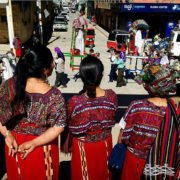 Ethical Fashion Guatemals
Ethical Fashion Guatemals Ethiical Fashion Guatemala
Ethiical Fashion Guatemala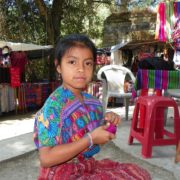
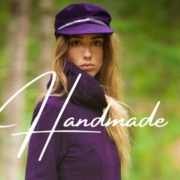 Ethical Fashion Guatemala
Ethical Fashion Guatemala
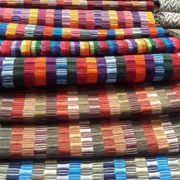
 Ethical Fashion Guatemala
Ethical Fashion Guatemala Ethical Fashion Guatemala
Ethical Fashion Guatemala
Leave a Reply
Want to join the discussion?Feel free to contribute!